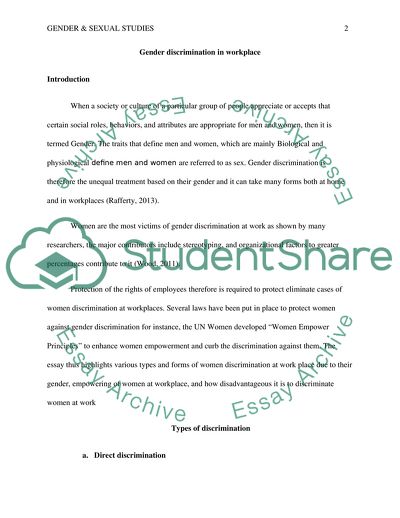Cite this document
(Gender Discrimination in Workplace Report Example | Topics and Well Written Essays - 1750 words, n.d.)
Gender Discrimination in Workplace Report Example | Topics and Well Written Essays - 1750 words. https://studentshare.org/gender-sexual-studies/1819878-gender-discrimination-in-the-workplace
Gender Discrimination in Workplace Report Example | Topics and Well Written Essays - 1750 words. https://studentshare.org/gender-sexual-studies/1819878-gender-discrimination-in-the-workplace
(Gender Discrimination in Workplace Report Example | Topics and Well Written Essays - 1750 Words)
Gender Discrimination in Workplace Report Example | Topics and Well Written Essays - 1750 Words. https://studentshare.org/gender-sexual-studies/1819878-gender-discrimination-in-the-workplace.
Gender Discrimination in Workplace Report Example | Topics and Well Written Essays - 1750 Words. https://studentshare.org/gender-sexual-studies/1819878-gender-discrimination-in-the-workplace.
“Gender Discrimination in Workplace Report Example | Topics and Well Written Essays - 1750 Words”. https://studentshare.org/gender-sexual-studies/1819878-gender-discrimination-in-the-workplace.


